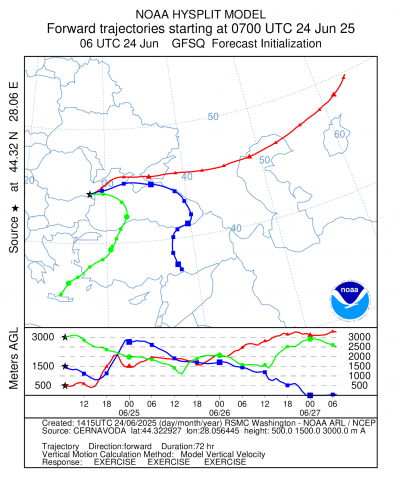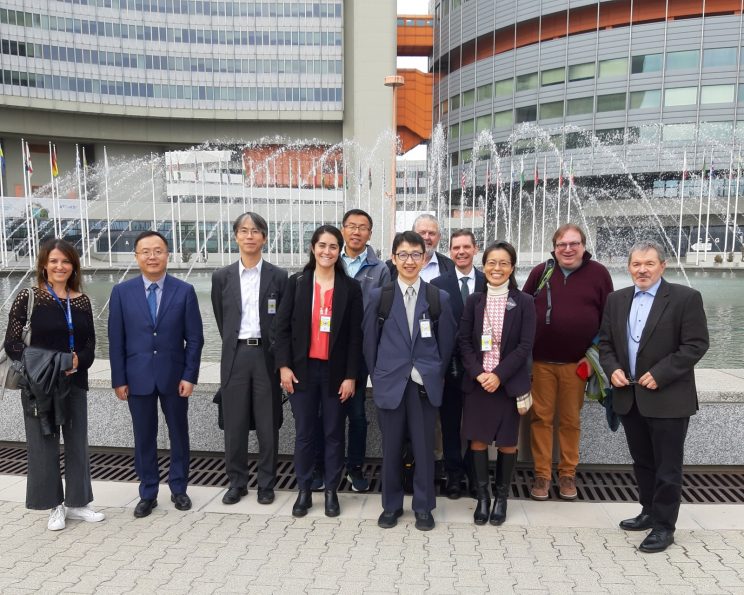Initial Organization
In 1989, Regional Specialized Meteorological Centers at Toulouse (Meteo-France), Bracknell and Montreal were set up under interim arrangements between the WMO and the IAEA. Under these arrangements Meteo-France was to provide global coverage, with the UK Meteorological Office as the backup center, until each WMO region had at least two RSMCs for transport model products.
The need for transport and dispersion forecasts became even more apparent during the oil fire emergency after the Gulf War, when many organizations provided ground personnel with predictions of the smoke plume behavior. These predictions were often misleading; there was no existing and well-recognized system to sort out predictions from less experienced sources.
In November 1992, a demonstration of NOAA’s RSMC capabilities was made to the WMO Commission for Basic Systems (CBS). Following this demonstration, the NOAA RSMC was accepted by WMO and subsequently became effective 1 July 1993. The addition of RSMC Washington resulted in two RSMCs per WMO region (RA) – Washington and Montreal (RA IV) and Toulouse and Bracknell (RA VI) – and indicated the need to revise the interim arrangements. Under the new global arrangements, Region IV was responsible for parts of Central and South America Region III, while Toulouse and Bracknell (changed to Exeter in December 2003), would cover the remaining Regions I and II (Africa and Asia). These new global arrangements were finalized at the WMO/CBS session in August 1994.
Growth of RSMC’s
Since 1992, other RSMCs have been accepted by WMO including Melbourne, Australia (RA V); Beijing, China (RA II); Obninsk, Russian Federation (RA II); Tokyo, Japan (RA II); Offenbach (RA VI); and Vienna (RA VI). RSMCs Melbourne and Beijing were initiated using some of ARL’s procedures and dispersion models. The RSMCs in Washington and Montreal provide backup to Melbourne until another RSMC is specified for RA V. RSMC Toulouse and Exeter are now responsible for RA I and VI.




